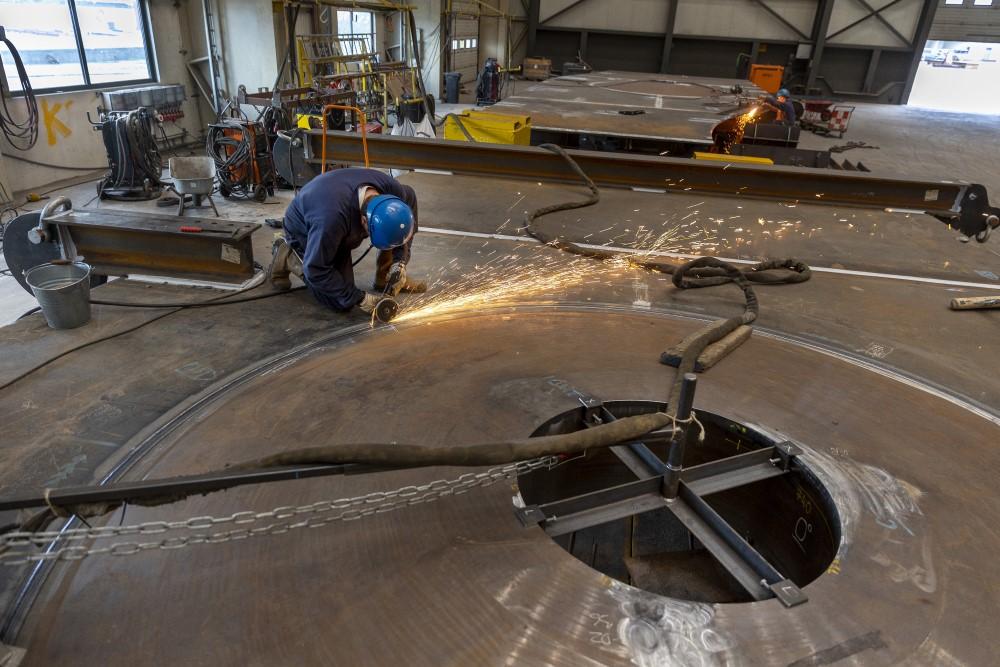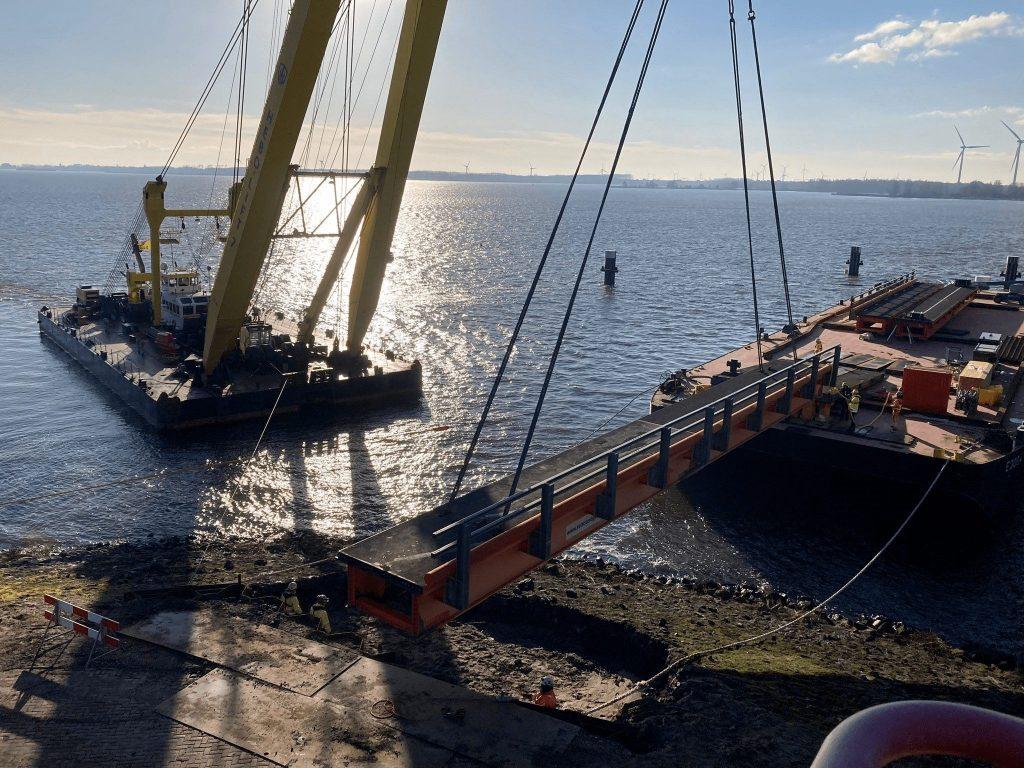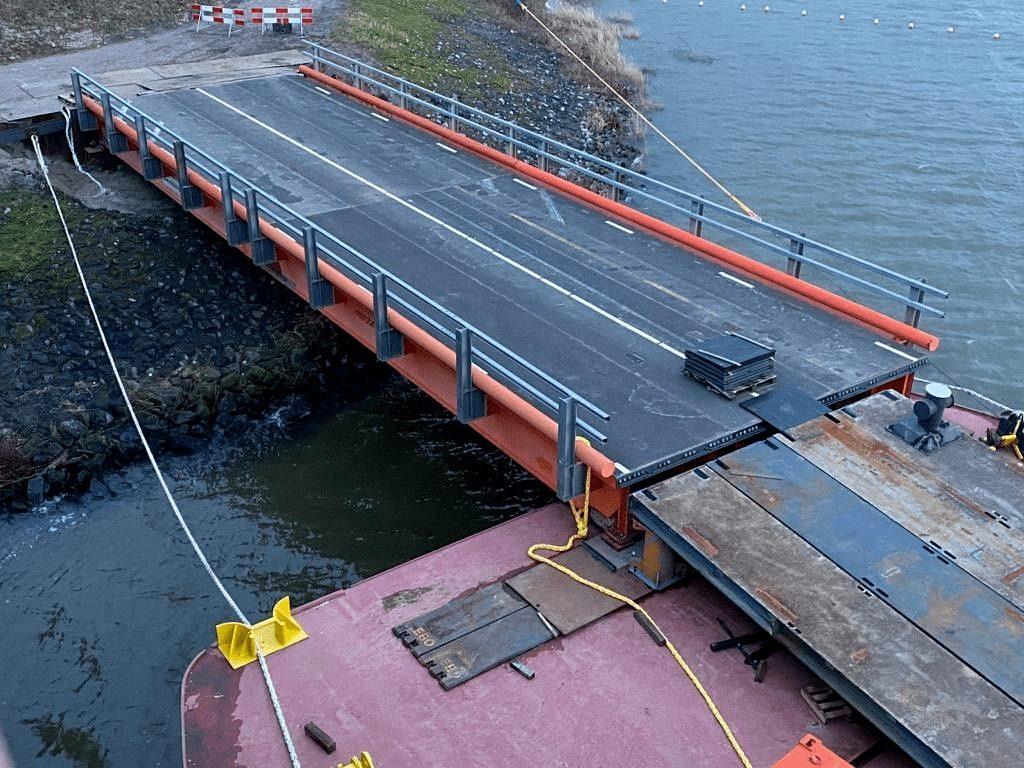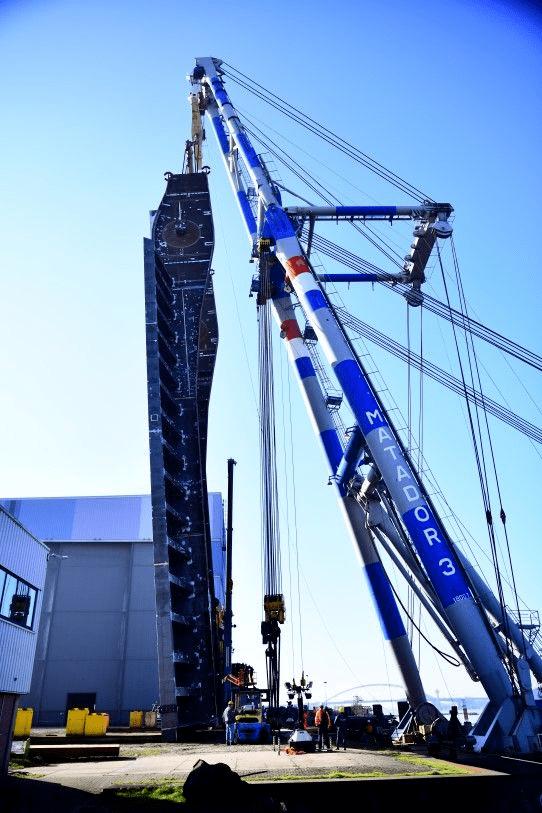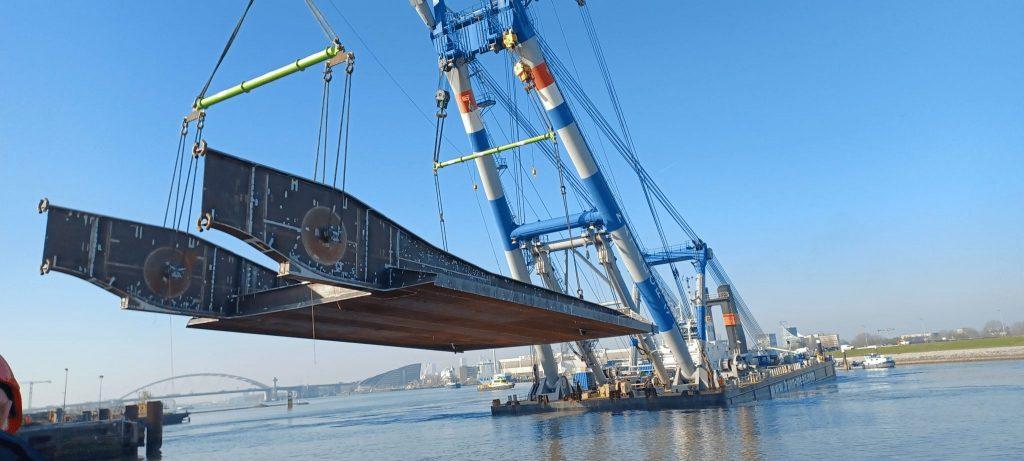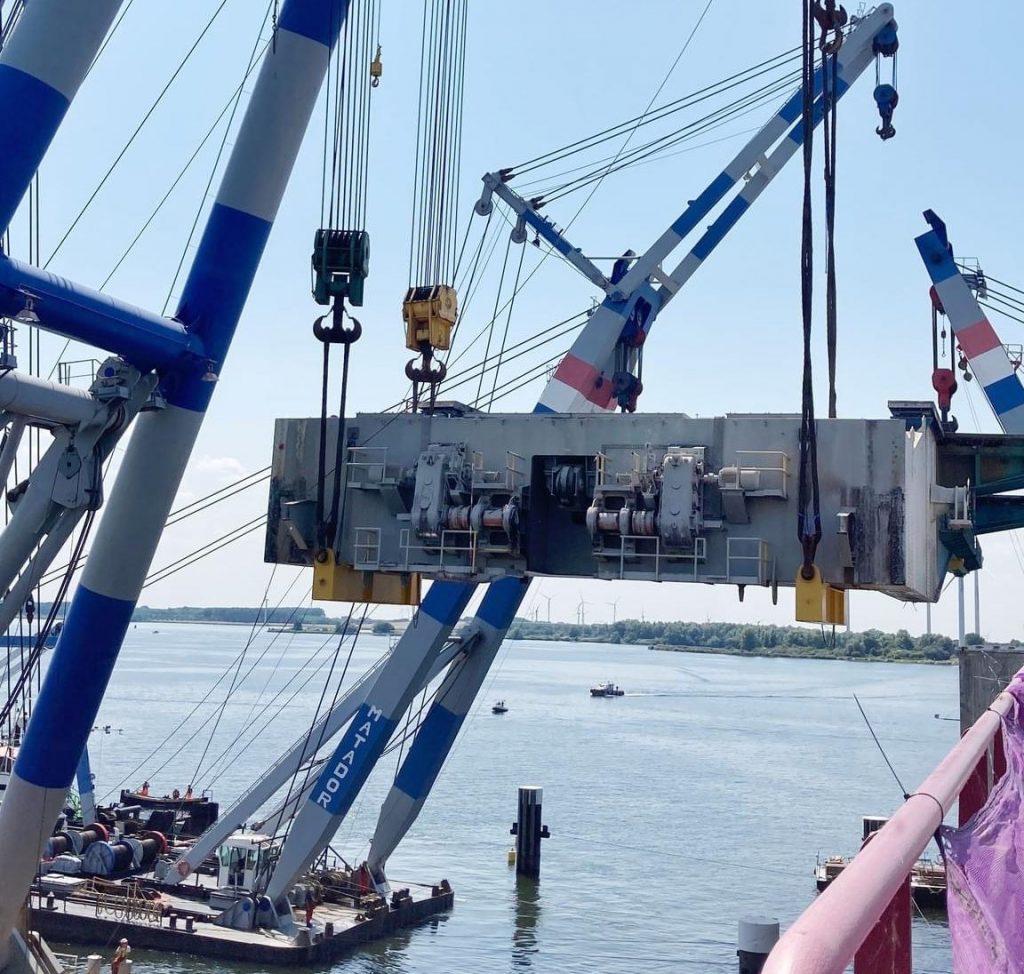2500 hours of welding per week
In a large production hall at our shipyard in Krimpen aan den IJssel, the new bridge valve is being built. It consists of a steel bridge deck over which traffic will eventually drive and the ballast box, the counterweight needed to move the bridge.
Loose steel plates are delivered to the hall. These are hundreds of puzzle pieces cut into shape that are assembled and welded together. This is a mega job, with 50 men welding every week. That’s 2,500 hours of welding per week.
When the welding is finished, the bridge will receive a double preservation system for extra longevity. The completely assembled bridge weighs a total of 2,000 tons. A large and heavy object, but the dimensions on the structure are accurate to 1 mm, a precision job.
Short lead time
In most projects, the design process consists of several phases: from pre-design, to final design and finally to execution design. The lead time for this project is short; during the period between June 9, 2023 and July 28, 2023, the individual components are already being installed. The new steel bascule bridge and the new rack road should be ready before then.
As a result, designs for some of the components have already been made in the pre-phase. For example, the drawings of the bascule bridge were already completed and the design of the gear track for the drive were also ready.



